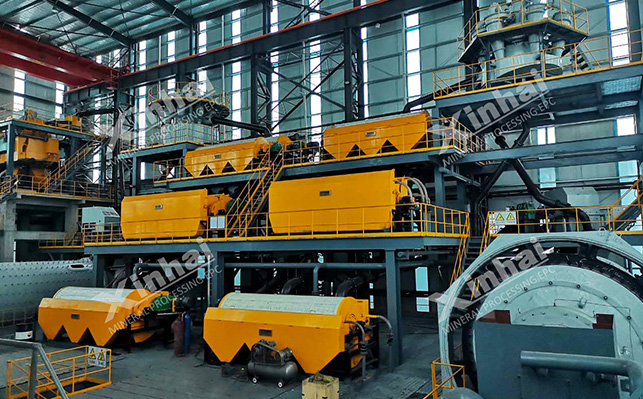Titanium is an important strategic mineral resource. Rutile, as an important mineral raw material for titanium and its compounds, is widely used in aviation materials, new metal functional materials, nuclear power materials, key electronic materials and other fields. There are not many rutile titanium ore resources in my country, so any mineral containing rutile should be utilized. This article introduces a process for extracting titanium from rutile in copper tailings.
The useful minerals in a copper tailings are mainly rutile, with a content of 0.636%, followed by niobium iron rutile, with a content of 0.325%. The gangue minerals are mainly biotite, garnet, calcite, quartz and pyroxene. The total content of TiO2 is 3.349%, and TiO2 mainly exists in the form of rutile, with a distribution rate of 64.35%, followed by silicate and titanite, with a distribution rate of 20.42%, and the distribution rate in ilmenite is 13.44%.
After the mineral processing test analysis, it is determined that the mineral processing process is a gravity-magnetic-flotation-electricity combined process. The density of rutile and ilmenite is much greater than that of quartz, biotite and other minerals, and quartz, biotite and other gangue minerals can be removed by gravity separation. The specific magnetic susceptibility of ilmenite and titanite is much greater than that of rutile, and they can be separated by magnetic separation. The characteristics of rutile as a good conductor also provide conditions for the electrostatic separation process. The detailed process flow is introduced below.
(1)Gravity separation process
The gravity separation process is a process of separation using density differences between minerals. In this process, the copper tailings are first crushed and ground to a suitable particle size to ensure the full dissociation of the minerals. Then, through gravity separation equipment such as jigs and shakers, the denser rutile and ilmenite are separated from the smaller density gangue minerals such as quartz and biotite by the action of the gravity field. This step can effectively remove most of the gangue minerals and lay the foundation for the subsequent mineral processing process.

(2)Magnetic separation process
The magnetic separation process is a process of separation using the difference in magnetic susceptibility between minerals. Among the heavy minerals obtained in the gravity separation process, the specific magnetic susceptibility of ilmenite and titanite is much greater than that of rutile. Therefore, ilmenite and titanite can be separated from rutile by magnetic separation equipment such as strong magnetic separators or magnetic drums to obtain rutile rough concentrate. This step can further remove magnetic minerals and improve the grade of rutile.
(3)Electrostatic separation process
The electrostatic separation process is a process of separation using the difference in conductivity between minerals. Rutile is a good conductor, and its conductivity is much higher than that of gangue minerals. In the rutile rough concentrate obtained by magnetic separation, the electrostatic separator uses the electric field to separate rutile from non-conductive gangue minerals to obtain electrostatic concentrate. This step can further purify rutile and remove residual gangue minerals.

(4)Flotation process
The flotation process is a process of separation using the difference in physical and chemical properties of mineral surfaces. In the rutile concentrate obtained by electrostatic separation, by adding appropriate flotation agents, such as collectors and frothers, the surface properties of rutile and gangue minerals are different, so as to achieve separation in the flotation machine. This step can obtain high-grade rutile concentrate, providing raw materials for subsequent deep processing and utilization.
The recovery and utilization of rutile in copper tailings provides a new idea for the re-selection and recovery of copper tailings. The re-selected copper tailings not only extract valuable elements, but also reduce the stockpile of tailings, reduce land occupation and environmental pollution. In the future, with the advancement of mineral processing technology and the improvement of environmental protection requirements, the utilization of copper tailings resources will have a broader prospect.